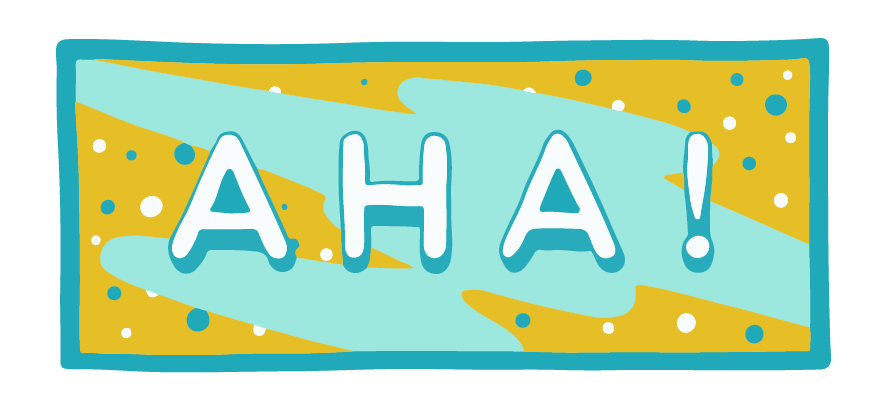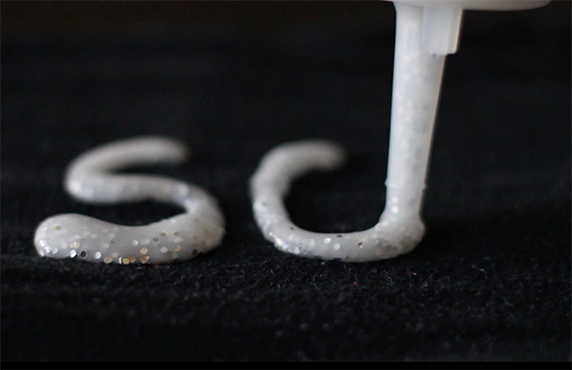Grade Level
All
minutes
15 minutes or fewer
subject
Chemistry
Activity Type:
STEAM, solubility, polysaccharides, After School Activity
These Aha! resources are also available in Spanish!
A funny thing happens when you add cornstarch to a liquid and heat up the mixture: It gets really, really thick, or viscous. That thickening process is called starch gelatinization, and it occurs almost anytime you heat starch in the presence of water. For anyone who loves puddings, pies, gravies, and creamy soups, cornstarch gel is an essential ingredient because it improves texture.
But cornstarch gel isn’t just good for cooking—it also makes a great base for homemade paint. Cornstarch gel is non-toxic, it gets nice and thick, and it is easy to clean from paint brushes and squeeze bottles. But cornstarch gel is pretty clear, which means that if you paint it onto something like a canvas or T shirt, it isn’t that visible. To make cornstarch gel into a good paint, you have to add pigment to make it opaque, or hard to see through.
So how can we make cornstarch gel opaque for painting?
To find out, we will first need to gelatinize some cornstarch, and then get mixing. Here’s what to do:
Materials
Microwave-safe jar or bowl
Three smaller re-sealable containers
Spoon
Water
Cornstarch
Sugar, salt, and baking powder
Measuring spoons and cup
Three clean squeeze bottles
(cleaned out ketchup bottles or dish soap containers work well)
Hot pads, microwave
Optional fun non-toxic stuff: chalk powder, biodegradable glitter, food coloring, curry powder, cocoa
What to do:
- Combine 1 cup water and 1 tablespoon cornstarch in a microwave-safe container, and mix well.
- Microwave the mixture on high for 15 seconds, and then stir with a spoon. The container may get hot, so use hot pads to hold the container while stirring.
- Continue microwaving for 15-second installments, stirring each time, until the mixture has thickened considerably. Let cool. While you wait, take a moment to notice the texture, color, smell, and consistency of the cornstarch gel you have just created. This is your paint base.
- Separate the cornstarch gel into three containers, and add a tablespoon of salt to one container, a tablespoon of baking soda to the second container, and a tablespoon of powdered sugar to the last container. Stir each “paint” mixture well.
- Test your three kinds of paint by putting each into a clean, empty squeeze bottle and squeezing the paint onto a hat, T-shirt, or canvas shoe. You can also use a normal paintbrush to paint it onto fabric of your choice. Which paint works the best?
- Let your 3D paint art dry slowly in a cool, dry place. If you want to start over, no sweat, this paint is washable! Simply launder your clothing in warm water with normal laundry detergent, dry, and begin again.
Be curious, ask questions, mess with stuff
- – How did the cornstarch mixture change in the microwave? Did the smell, color, clarity, texture, or volume change during microwaving?
- – What happened to the cornstarch mixture as it cooled? Does the cornstarch gel stay gelled even after it cools?
- – Which of the three added ingredients – salt, powdered sugar, or baking soda – most easily mixed into the cornstarch gel? How do you think the clarity of the paint relates to how easily the ingredient mixed in? Use your observations to decide.
- – How do the three paints that you made compare to one another? Do any of them sparkle? When you painted with each of them, which looked the best when wet, and which looked the best after drying?
- – Try adding more of each ingredient to the paint mixtures you created. Which ones mix in most easily now?
Aha! It’s all about solubility!
Water is a clear liquid, and light passes through it easily. When you mix other substances into water, they can decrease its clarity by scattering light or blocking it entirely. Small molecules and atoms that dissolve easily and completely into water form a solution. Solutions are usually as clear as water, because the substances that have dissolved into them cannot be seen. Saltwater is one good example.
In contrast, large molecules that do not mix or dissolve easily into water often form suspensions, which are opaque. Over time, a suspension will separate into layers as the large insoluble molecules that were “suspended” in water settle on the bottom. Before you microwaved it, the cornstarch water mixture you made was a good example of a suspension. The large globs of starch molecules, called granules, didn’t mix very well with the water, requiring regular stirring to keep them from collecting on the bottom of the jar.
But when you heated your starch suspension, those granules broke down into smaller molecules called polysaccharides, which could mix completely into the surrounding water. As some of the water evaporated during heating, and as the solution subsequently cooled, the polysaccharides were able to stick together, becoming tangled with one another while trapping the remaining water molecules between them to form a semi-transparent gel. Awesome.
Cornstarch gel is a type of mixture called a colloid. Colloids are a kind of middle-ground between a suspension and a solution. They can be more transparent like a solution, or opaque like a suspension, but unlike suspensions, a colloid doesn’t settle out over time.
What’s so cool about a cornstarch colloid is that you can still suspend or dissolve other substances into the water trapped inside of it—which is exactly what you did with each of the ingredients you added. The substances that didn’t dissolve easily (powdered sugar, especially) formed a suspension and made the cornstarch gel opaque. The substances that did dissolve easily (salt) didn’t impact the clarity at all.
Experiment more, make predictions. It’s what scientists do.
Ask questions: What dissolves or doesn’t dissolve in cornstarch gel? Why?
Make predictions: Before adding other ingredients into your cornstarch gel, first try mixing them into water to see which ones dissolve easily, then predict whether they will dissolve easily into your gel.
Modify the experiment: Try adding different household materials like cinnamon, curry, glitter, colored chalk powder, or other non-toxic coloring agents to change up your paint. Be warned: food coloring, chocolate, cinnamon, and KoolAid are great ways to color your homemade paint, but they may stain clothing.
Extrapolate: What do you think will happen if you keep adding more and more cornstarch to your cornstarch gel? Will it still be a gel? What about if you keep adding more and more salt or baking soda? How do you think the texture will change?
Document your observations: Which of your paint mixtures look the best after they’ve dried? Take a photo of your results, and tweet or Instagram them with the hashtag #StarchPaint.

Aha! by Science Friday, is a series of short science experiments that you can do in 15 minutes or less, with materials you can find at home.
Meet the Writer
About Ariel Zych
@arieloquentAriel Zych is Science Friday’s director of audience. She is a former teacher and scientist who spends her free time making food, watching arthropods, and being outside.
